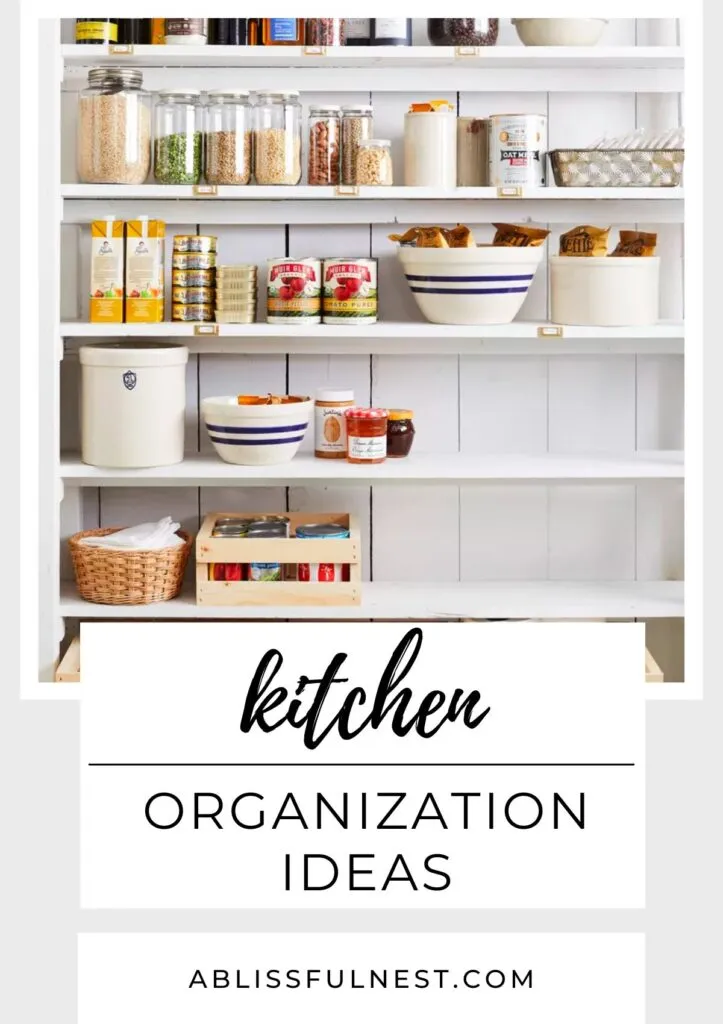Decluttering Your Kitchen for Success
Embarking on a kitchen decor and organization journey begins with a critical first step decluttering. This isn’t merely tidying up; it’s a transformative process that clears the path for effective organization and enhanced aesthetics. A decluttered kitchen provides a clean slate, allowing you to see the space with fresh eyes and determine what truly serves your needs. It’s about letting go of items you no longer use, duplicates, or things that simply don’t fit your lifestyle. This foundational step is vital to achieving both functional organization and a visually appealing kitchen that reflects your personal style. The goal is to create a space that promotes ease of use and reduces visual clutter, thereby fostering a more enjoyable cooking and living environment. By meticulously assessing your kitchen’s contents, you’ll be well-prepared to establish an organization system that works for you.
Assess and Purge
The assessment phase involves a thorough examination of every item in your kitchen. Start by taking everything out of cabinets, drawers, and the pantry. As you handle each item, ask yourself some key questions. Have you used it in the past year? Does it serve a specific purpose? Does it bring you joy? If the answer to these questions is no, or if you have multiples of the same item, it’s time to consider letting it go. Be honest with yourself about what you need and what you don’t. This might be a challenging process, but remember that the goal is a more functional and enjoyable kitchen. This process often reveals hidden treasures and forgotten items, too. It helps to create distinct piles for keeping, donating, selling, or discarding items. By the end of this assessment, you will have a clearer understanding of the space you have and the items you need to organize.
The KonMari Method
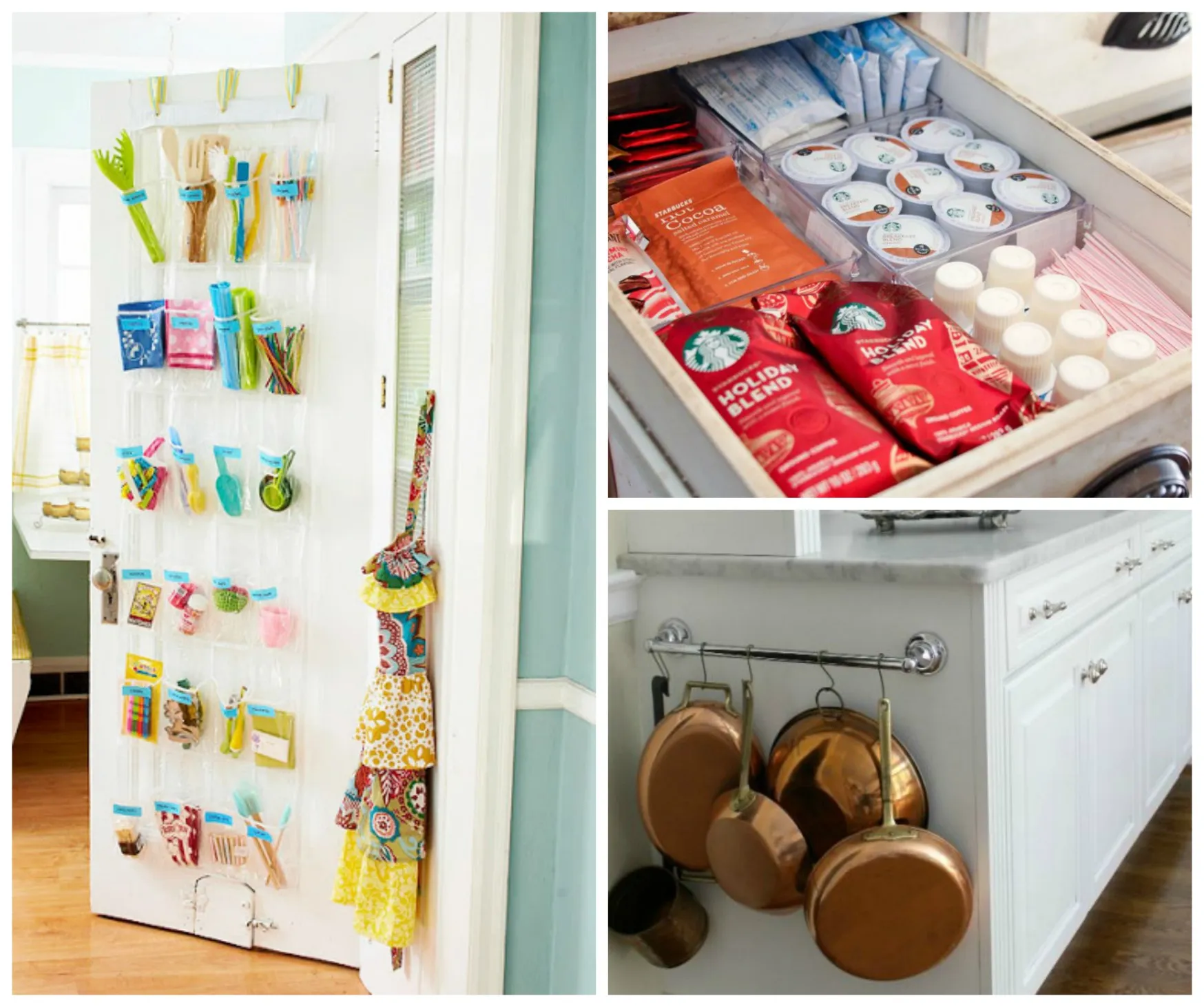
Inspired by Marie Kondo’s philosophy, the KonMari method suggests keeping only those items that ‘spark joy’. This approach encourages a deeper connection with your belongings, making it easier to let go of items that no longer serve you. Apply this method by holding each item and asking yourself if it brings you joy. If it does, it stays; if not, it goes. This isn’t just about functionality; it’s about surrounding yourself with items that you genuinely love and use. For kitchen organization, this might mean keeping your favorite utensils, your go-to cookware, or any gadgets that consistently bring you pleasure. The KonMari method can be particularly helpful for the items you’re on the fence about, guiding you to make decisions that align with your happiness and lifestyle. This can make you more mindful of what you buy and how you use space.
Donate or Discard
Once you’ve assessed your kitchen items, it’s time to decide what to do with the items you’re letting go. Separate your items into categories for donating, selling, or discarding. Gently used cookware, dishes, and utensils can be donated to local charities or shelters. Consider selling high-quality or unused items online or at a consignment shop. Any items that are broken, damaged, or no longer usable should be discarded responsibly. Proper disposal is essential, so check with your local recycling guidelines. Making thoughtful choices about each item ensures you are not only decluttering your kitchen, but also minimizing waste and potentially helping others. This final step of decluttering not only clears space but also gives you a sense of accomplishment. It creates a feeling of lightness and readiness for the next steps in the kitchen decor and organization process.
Optimizing Kitchen Space
With a decluttered kitchen, the next crucial step is optimizing your available space. This involves maximizing storage potential and creating a layout that enhances functionality. This phase considers the vertical dimension, underutilized spaces, and countertop efficiency. Efficient space utilization leads to a more organized and easier-to-use kitchen. Careful planning and strategic storage solutions create a kitchen that not only looks good but also works well. The goal is to ensure that everything has its place, reducing clutter and making cooking and food preparation more enjoyable. Proper use of space allows you to keep essential items readily accessible and out of sight items stored efficiently. It improves the overall flow, making your kitchen a more efficient and pleasant place to be.
Vertical Storage Solutions
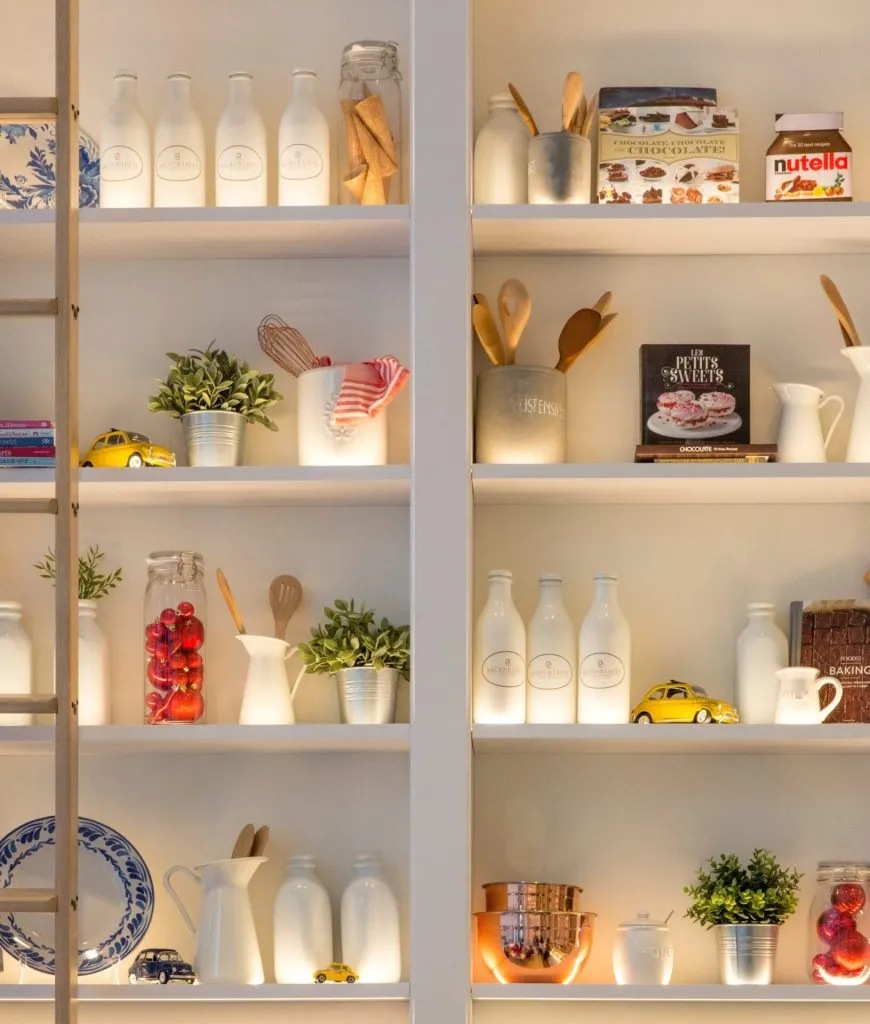
Vertical storage is an invaluable technique for kitchens with limited space. This involves using shelves, racks, and organizers to utilize the height of cabinets and walls. Install adjustable shelves in your pantry and cabinets to customize the space to fit your needs. Utilize pull-out shelves and drawers for easier access to items at the back of cabinets. Consider over-the-door organizers for storing spices, cleaning supplies, or other small items. In open areas, incorporate tall, slim shelves or storage towers. Vertical storage provides more storage capacity, keeps items within easy reach, and frees up valuable counter and floor space. Vertical storage helps to avoid clutter and enhance the organization of your kitchen and improves the visual appeal by creating clean lines and efficient use of space.
Utilizing Wall Space
Wall space is often underutilized in the kitchen, but it presents numerous opportunities for storage and organization. Install floating shelves to display cookbooks, decorative items, or frequently used dishes. Hang pot racks to free up cabinet space and add a touch of style. Use magnetic knife strips to keep knives safely and conveniently accessible. Mount spice racks on the wall near your cooking area. Wall-mounted storage solutions are a great way to take advantage of space that is normally unused. Utilizing wall space keeps countertops clear, makes items easily accessible, and adds to the aesthetic appeal of your kitchen. This method helps make your kitchen feel more spacious and organized, improving both functionality and design.
Under-Cabinet Storage
Under-cabinet storage is an efficient way to maximize space in your kitchen. Install pull-out shelves or drawers in your lower cabinets for easy access to pots, pans, and other cookware. Mount racks under cabinets to store mugs, wine glasses, or frequently used utensils. Utilize the space under the sink for cleaning supplies and other essentials. Consider adding a built-in step stool for accessing upper cabinets. Under-cabinet storage makes use of all available space. It keeps items easily accessible. These storage solutions help free up countertop space, create a more organized kitchen layout, and make your kitchen feel more open and less cluttered. This extra storage also helps you keep frequently used items within easy reach.
Maximize Counter Space
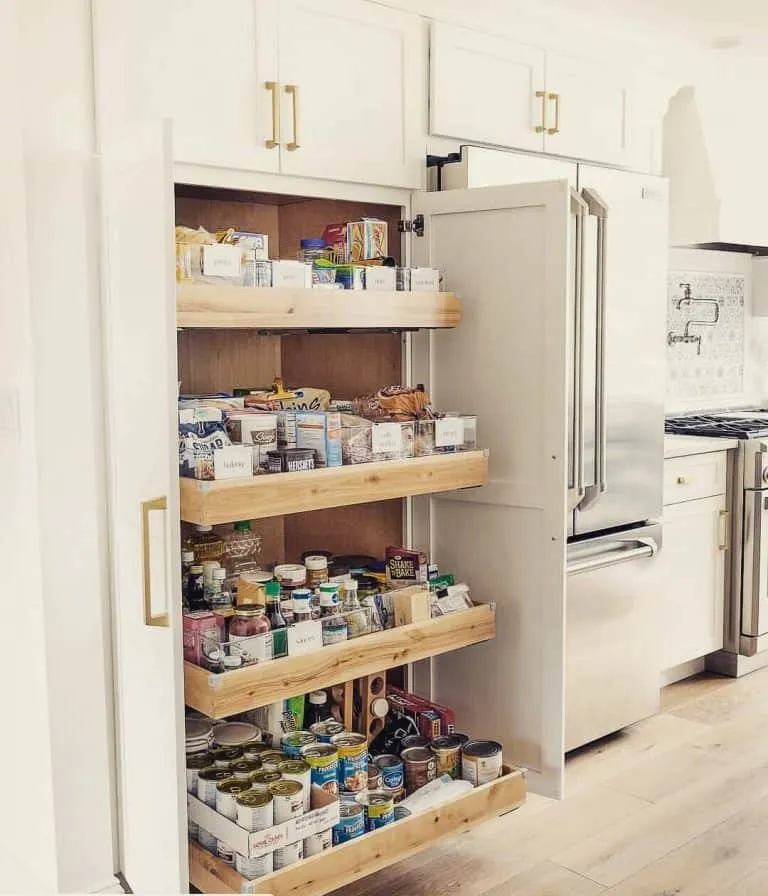
Counter space is a precious commodity in any kitchen, and maximizing its functionality is essential for smooth meal preparation. Keep only essential items on your counters, such as frequently used appliances and tools. Store less frequently used items in cabinets or drawers. Utilize storage containers and organizers to keep items neat and tidy. Consider installing a built-in cutting board or a pull-out spice rack to save space. Organize countertops using trays, containers, and utensil holders to maintain visual appeal. Maximize your counter space with smart organization, and make the most of your available space. By minimizing clutter and organizing your items, you create a functional and visually appealing kitchen, perfect for cooking and enjoying meals. Consider using your counter space efficiently and enjoy the added space.
Organizing Kitchen Essentials
Organizing kitchen essentials is critical for a well-functioning kitchen, and organizing your pantry, refrigerator, and other essential areas. Proper organization makes it easier to find what you need when you need it, which saves time and reduces stress. This organized system streamlines your cooking process, and helps maintain a clean and efficient workspace. The goal is to create a system that is easy to maintain and ensures that your kitchen functions at its best. With thoughtful organization, your kitchen will be a more enjoyable and efficient place to cook, store, and enjoy food. It can help avoid food waste and keeps your kitchen supplies in an orderly manner.
Pantry Organization
A well-organized pantry is a cornerstone of an efficient kitchen. Start by grouping similar items together, such as grains, canned goods, snacks, and baking supplies. Use clear containers to store dry goods like pasta, rice, and flour. Label all containers clearly to easily identify contents. Place frequently used items within easy reach. Consider using shelf risers to maximize vertical space. Install a lazy Susan for easy access to items stored in the back. A well-organized pantry simplifies meal preparation and helps you keep track of your inventory. You’ll find it easier to locate ingredients, reduce food waste, and create a more functional and aesthetically pleasing pantry. An organized pantry is essential for a smooth-running kitchen.
Group Like Items
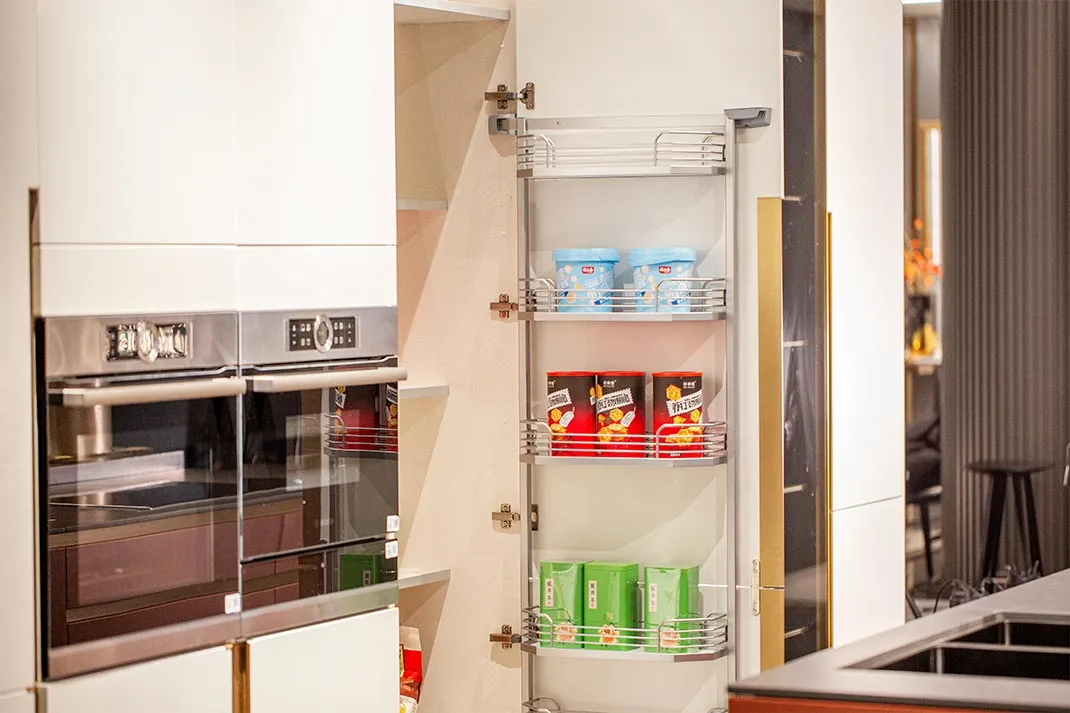
Grouping similar items together is a basic but highly effective pantry organization strategy. This means organizing items by category: canned goods, baking supplies, snacks, and grains. Within each category, organize items by type and frequency of use. Grouping like items helps you quickly locate what you need, keep track of your inventory, and avoid buying duplicates. This method is important for efficient meal preparation and makes it easy to see what supplies you have on hand. It helps maintain a tidy and organized pantry, improving overall functionality. This simple yet effective strategy can transform your pantry.
Use Clear Containers
Using clear containers is essential for effective pantry organization. Clear containers allow you to easily see the contents and how much of each item you have. They are perfect for storing dry goods such as pasta, rice, flour, and cereal. Select containers that are airtight to preserve freshness. Label each container clearly with the contents and expiration date. Uniform containers also create a visually appealing and organized pantry. Clear containers are a simple yet highly effective way to improve pantry organization and make your kitchen more efficient. This also minimizes clutter and keeps your food items fresh for longer periods.
Refrigerator Organization
A well-organized refrigerator prevents food waste and makes it easier to find and use ingredients. Begin by designating specific zones for different food types, like produce, dairy, and leftovers. Use clear bins and drawers to group items, such as fruits and vegetables. Label shelves clearly, and place frequently used items within easy reach. Store leftovers in clear, labeled containers. Regularly check expiration dates and discard any expired items. By organizing your refrigerator efficiently, you’ll reduce food waste, save money, and enjoy fresh, accessible ingredients. Proper refrigerator organization is essential for maintaining a healthy and efficient kitchen, encouraging mindful eating habits.
Shelf Placement
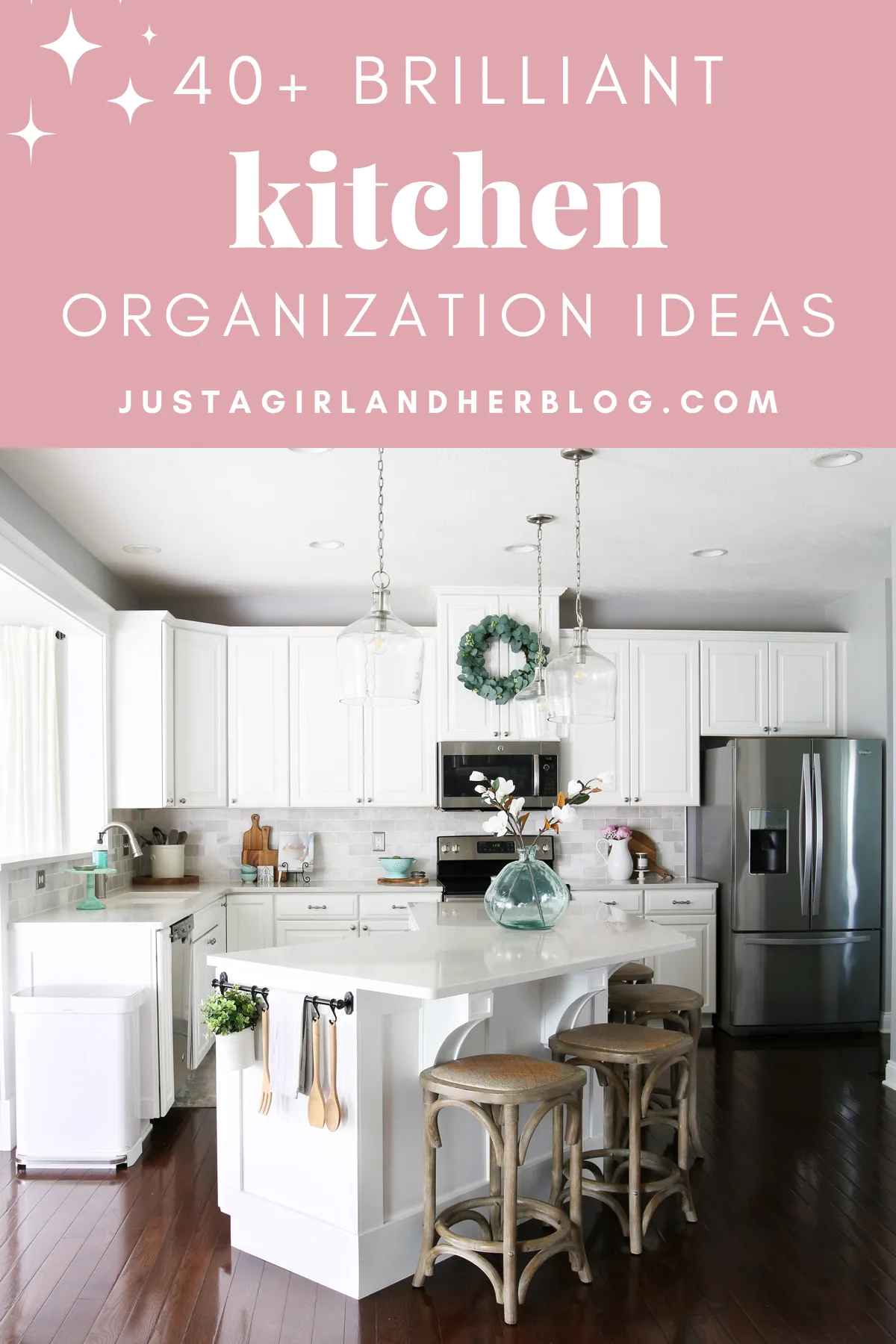
Proper shelf placement is key to organizing your refrigerator effectively. Place frequently used items on the top shelves, as they are the easiest to reach. Store dairy products, such as milk and yogurt, on the middle shelves. Use the bottom shelves for raw meat and seafood to prevent cross-contamination. Place fruits and vegetables in designated drawers to keep them fresh. Adjust the shelves to accommodate taller items and make the most of your space. Optimize shelf placement makes it easy to grab what you need quickly. Effective shelf placement reduces food waste and keeps your kitchen clean and organized. Making your refrigerator user-friendly enhances kitchen efficiency and supports healthy food habits.
Food Rotation
Food rotation, also known as the ‘first-in, first-out’ method, is vital for managing your refrigerator efficiently. When restocking your refrigerator, place newer items behind older ones, ensuring that older items are used first. This practice helps to prevent food from expiring and reduces food waste. Regularly check expiration dates and consume items before they expire. Labeling food with the date of purchase or preparation can also help you keep track of your inventory. Implementing food rotation saves money, reduces waste, and maintains a well-stocked refrigerator. Regular rotation ensures that you’re using fresh ingredients. This habit promotes healthy and sustainable eating in your kitchen.
Kitchen Decor to Enhance Organization
Kitchen decor isn’t just about aesthetics; it can also be a powerful tool for enhancing organization. Incorporating decorative storage solutions and visually appealing elements can improve the functionality and the beauty of your kitchen. This approach allows you to seamlessly blend style and organization, creating a space that is both efficient and aesthetically pleasing. This ensures that your kitchen looks great and functions at its best. Using decorative elements that serve an organizational purpose boosts both style and practicality. This helps you have a more functional and more beautiful space.
Adding Decorative Storage
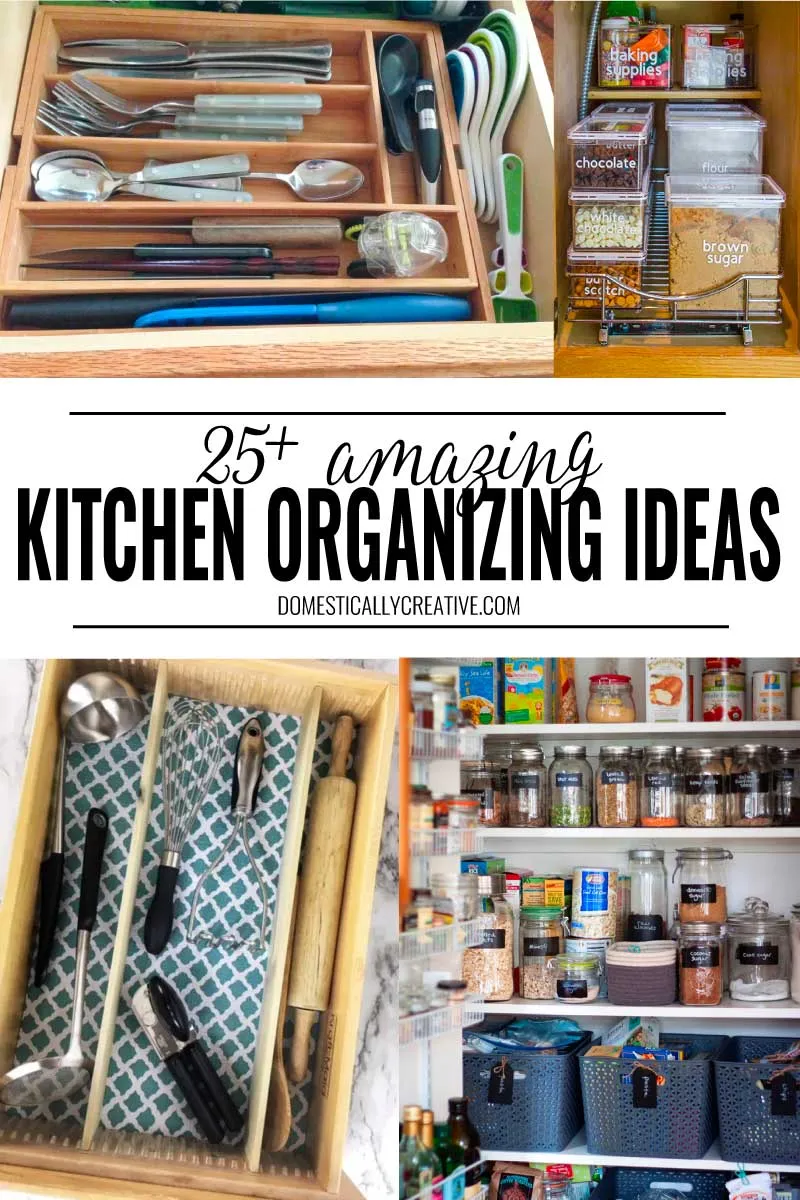
Incorporate decorative storage options into your kitchen design. Use stylish baskets and bins to store pantry items, utensils, or dish towels. Choose attractive canisters for dry goods and spices. Install open shelving to display decorative items, cookbooks, or frequently used dishes. Consider using a decorative tiered tray on your counter for fruits or snacks. Decorative storage not only enhances the look of your kitchen but also adds functional storage space. It helps to keep items organized and accessible while also adding a touch of personality to your kitchen. Decorative storage can turn essential items into design elements.
Open Shelving Ideas
Open shelving is a stylish and functional way to display items in your kitchen while adding storage. Install open shelves to showcase your favorite dishes, cookbooks, or decorative items. Use the shelves to store frequently used items within easy reach. Decorate the shelves with plants, artwork, or other personal touches to create a cohesive and visually appealing design. Open shelving can make your kitchen feel more open and airy. It provides easy access to your essential items. You can also customize the design to reflect your personal style. This method adds character and charm while also promoting organization and efficiency.
Incorporating Plants
Incorporating plants is a simple yet effective way to enhance both the decor and the air quality in your kitchen. Add potted herbs to your windowsill, to have fresh ingredients on hand. Place low-maintenance plants on countertops or shelves to add a touch of greenery. Consider hanging plants to maximize space and add visual interest. Plants bring life and freshness into your kitchen while also contributing to a healthier environment. Choosing plants is a simple way to freshen up the space. It also helps create a more welcoming and inviting kitchen. This method adds charm and promotes a connection to nature.
Final Thoughts

Transforming your kitchen into a well-organized and beautifully decorated space is a rewarding endeavor. By decluttering, optimizing space, organizing essentials, and incorporating decorative elements, you can create a kitchen that is both functional and aesthetically pleasing. Remember that organization and decoration are ongoing processes. Regularly assess your space, make adjustments as needed, and enjoy the journey of creating a kitchen that is perfectly suited to your needs and lifestyle. By prioritizing function and style, you will have a kitchen that you love to cook in and share with others. Enjoy the process and celebrate your results!
